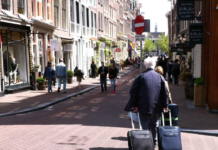The number of homes available for rent has steadily dropped, with fewer than 1,000 expected to be available in the capital by the end of the year, property website Daft.ie has warned.
The listings site said a lack of new properties coming on stream meant the number of houses and apartments being offered to tenants had steadily fallen, which was putting upward pressure on prices.
Today, there are just over 5,000 available nationally. This compares with a high of 15,355 in July 2009.
In May 2016, the number had fallen to 6,438, and to 6,189 in the same month of last year. The situation is compounded in our main cities.
“We’re seeing a steady decline in the stock of long-term rental units on the market over the last number of years,” a spokesman said. “Only an increase in supply will alleviate this and help ease the rental shortage currently being experienced, especially in Dublin but also nationwide.”
The analysis shows:
In Dublin, the high point was in July 2009, when 8,264 units were available but this fell to 1,611 in May 2016, and further to 1,422 in May last year. By the end of the year, the number is expected to drop below 1,000, a spokesman said;
- In Galway, 666 were on the market in August 2011. This fell to 318 in May 2016, to 209 in May the following year and there are 170 at present;
- In Cork, some 307 are available. This compares with 399 in May last year and 936 in June 2009;
- In Limerick, just 129 are available, compared with 132 in May last year and 151 in May 2016;
- In Waterford, they have dropped from 209 in May 2016 to 123 today;
The most recent ‘Daft Rental Price Report’, published earlier this month, shows prices rose by an average of 11.5pc in the year to reach a new all-time high of €1,261 per month – €232 a month higher than the pre-crisis peak in 2008.
In Dublin, prices rose by 12.8pc to nearly €1,900 – up 30pc compared with 2008. In Limerick, rents are up 17.1pc in a year and by 14.6pc in Galway.
The situation is exacerbated by the number of landlords seeking to lease their properties on short-term holiday lets to tourists, which is far more lucrative.
Research by the firm suggests more than half of all available rental properties in the capital are listed as short-term tourist lettings.
Yesterday, there were 1,258 long-term rental properties available in Dublin on Daft.ie, it said. By contrast, the stock of full homes to let on Airbnb from professional listers according to website Inside Airbnb, which analyses publicly available information about a city’s Airbnb’s listings, stood at 1,419.
This means 53pc of the city’s rental stock is effectively being targeted at short-term visitors rather than helping to resolve the capital’s housing crisis.
Daft.ie co-founder Eamonn Fallon said up to 50,000 homes a year were needed to meet underlying demand, including 10,000 rental units in the capital. That equated to an apartment block of 200 units to open every week for “at least” the next decade.
Despite the introduction of rent pressure zones, rental inflation showed “no sign of abating” unless there was a sharp increase in supply, a spokesman added.
The Institute of Professional Auctioneers and Valuers said disproportionate regulation of private landlords was the main reason why landlords were choosing short-term lettings.
Sinn Féin called for the short-term sector to be regulated to prevent further price rises and homelessness.
An Airbnb spokesperson said the report used “inaccurate scraped data” to make “misleading assumptions.”
“Entire home listings on Airbnb in Dublin last year represented just 1.1pc of the available housing stock in the city, and the vast majority (88pc) of hosts share the home in which they live. The Airbnb model is unique and empowers regular people and boosts local communities, generating over €506m in economic activity in Ireland last year.
“We have put forward suggestions to government for clear and fair home sharing rules for listings in Dublin, to help ensure that home sharing continues to grow responsibly and sustainably.”
















